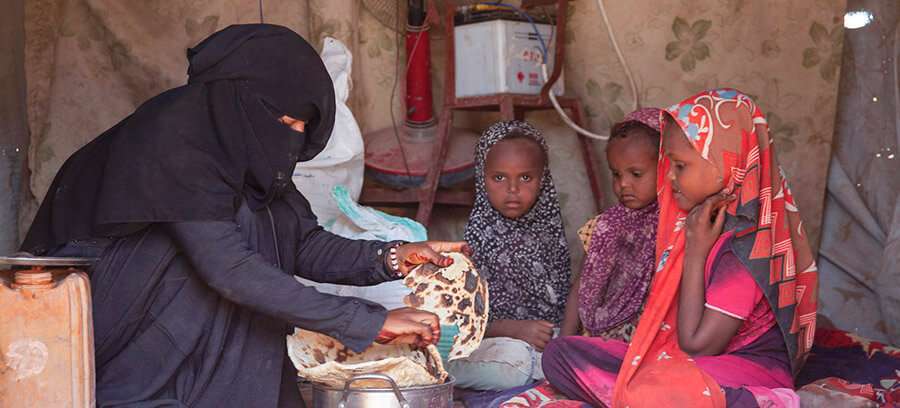Conflict and economic crises push food insecurity to highest level in five years

The Global Network Against Food Crises (GNAFC) study highlights that it has been five years since hunger levels were this severe in the 55 countries surveyed in 2020. Reaching 155 million is an increase of some 20 million people from the previous year, and raises a stark warning about a worrying trend: acute food insecurity has continued its relentless rise since 2017, the first edition of the report.
African countries continue to suffer disproportionately from acute food insecurity. Conflict pushed nearly 100 million people into acute food insecurity, followed by economic shocks (40 million) and climate extremes (16 million).
"Conflict and hunger complement each other. We have to address them together to solve them.... We must do everything we can to stop this vicious circle. Solving hunger is the basis for stability and peace," said UN Secretary-General António Guterres in the report.
Based on the acute food insecurity scale of the Integrated Food Security Phase Classification, the Network's study found that the worst affected countries were Burkina Faso, South Sudan and Yemen.
In these nations, some 133,000 people suffered the highest level of food insecurity and needed urgent action to prevent widespread death and the collapse of livelihoods.
At least another 28 million people were "on the brink of starvation" in 38 countries and territories, where urgent action saved lives and livelihoods and prevented the spread of famine.
Nearly 98 million people suffering from hunger in 2020 - or two out of three - lived on the African continent. Other parts of the world that were severely affected included Yemen, Afghanistan, Syria and Haiti, which were among the ten worst food crises last year.
In Central America and Haiti, more than 11.8 million people experienced a food crisis situation.
During the five years of the Network's reporting, 39 countries or territories experienced food crises. Between 2016 and 2020, the population affected by high levels of acute food insecurity increased from 94 million to 147 million.
In addition, in the 55 countries or territories in food crisis covered by the report, more than 75 million children under five were stunted (too short) and more than 15 showed signs of wasting (too thin).
While conflict will remain the main driver of food crises during 2021, COVID-19 and its containment measures, as well as extreme weather events, will continue to exacerbate acute food insecurity in fragile economies.

The Network's report says that "the COVID-19 pandemic has highlighted the fragility of the global food system and the need for more equitable, sustainable and resilient systems to feed 8.5 billion people nutritiously and consistently by 2030".
"A radical transformation of our agri-food systems is needed to achieve the Sustainable Development Goals," the European Union, the Food and Agriculture Organisation of the United Nations, the World Food Programme - founding members of the Global Network - and the US international development agency USAID said in a statement.
In March 2021, the UN Secretary-General established a famine prevention task force, led by UN emergency relief chief Mark Lowcock, with the Food and Agriculture Organization of the United Nations, the World Food Programme and support from the Office for the Coordination of Humanitarian Affairs and other UN agencies and NGO partners.








